The Leibniz-IZW regular publishes press releases on key findings and insights from its research and on events, awards or personalia. The press releases are distributed directly to journalists on our press release distribution mailing list. Press releases are also disseminated through the distribution services Informationsdienst Wissenschaft, AlphaGalileo and EurekAlert. Are you interested in receiving our press releases directly via e-mail? In this case please send us an email to presse@izw-berlin.de.
Current press releases
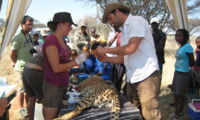
Citizen Science as a concept for success in wildlife biology
Reliability of data and motivation of citizens are the factors of success
The involvement of citizens in research projects is booming. Citizen scientists allow professional scientists to work with much larger data sets than in the past and thus help in achieving better research results. However, for a successful collaboration it is critical that the quality of submitted data is ensured and the motivation of citizens is maintained over a long time period. This is the conclusion of an international team of scientists with the participation of the Leibniz Institute for Zoo and Wildlife Research in Berlin and the lead of the Konrad Lorenz Forschungsstelle for Behaviour and Cognition of the University of Vienna. The team presents four case studies in the field of wildlife biology in the scientific journal “Ethology”.
Read more … Citizen Science as a concept for success in wildlife biology

Loss of a Species – A Giant, Extinct.
tedxtum.com Thomas Hildebrandt
What happens when an animal species goes extinct? Is it due to the natural path of evolution, or the thoughtless actions of humankind? Less than a century ago, hundreds of thousands of northern white rhinos roamed the landscape of Central Africa. Today, there are only three individuals left. Prof. Hildebrandt has made it his mission to save the most endangered mammal species on Earth. Together with his team, he travels around the world to perform incredible work in the area of conservation science, which sometimes requires extreme and dangerous procedures when dealing with animals like rhinos and elephants.
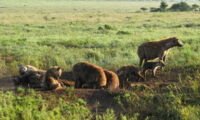
Social status influences infection risk and disease-induced mortality
Spotted hyena cubs of high-ranking mothers have a lower probability of infection with and are less likely to die from canine distemper virus (CDV) than cubs of low-ranking mothers. In subadults and adults, the picture is reversed – high-ranking females exhibit a higher infection probability than low-ranking females whereas mortality was similar for both groups. These are the surprising and interesting results of a long-term study conducted by scientists at the German Leibniz Institute for Zoo and Wildlife Research (IZW) who investigated how social status and age influence the risk of infection with CDV and its consequences for survival. They have just been published in the scientific journal “Functional Ecology”.
Read more … Social status influences infection risk and disease-induced mortality
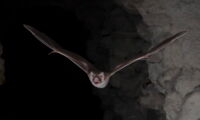
You are what you eat: Diet-specific adaptations in vampire bats
Vampire bats feed exclusively on blood, a mode of feeding unique amongst mammals. It has therefore been long suspected that vampire bats have highly specific evolutionary adaptations, which would be documented in their genome, and most likely also have an unusual microbiome, the community of micro-organisms assembled in their digestive tract which may help with the digestion of blood. An international group of scientists including several from the German Leibniz Institute for Zoo and Wildlife Research (IZW) analysed the genome of vampire bats and the microorganisms that live in their gut and asked the question how much the viruses contained in the blood may affect the vampire bats. The results demonstrate that the microbiome plays an essential part in tackling nutritional and non-nutritional challenges posed by blood meals and improving resistance to viral infections. Because vampire bats carry rabies, they are often considered as a threat to livestock. As it turns out, vampire bats carry fewer infectious viruses than previously thought. These findings have now been published in “Nature Ecology & Evolution” and “EcoHealth”.
Read more … You are what you eat: Diet-specific adaptations in vampire bats
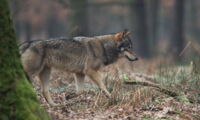
Committed to relatives: Hounds and wolves share their parasites
Grey wolves, as all wild animals, are hosts to a variety of parasites. The presence of grey wolves in German forests has little influence on the parasite burden of hunting dogs. This reassuring conclusion is the result of a new study at the Berlin-based Leibniz Institute for Zoo and Wildlife-Research (IZW). The study examined the faeces of 78 hunting dogs over several months in an area without wolves and in one that had been recolonised. The results have been published in the open access scientific journal “International Journal for Parasitology: Parasites and Wildlife”.
Read more … Committed to relatives: Hounds and wolves share their parasites
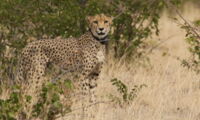
Cheetah populations are endangered – Red List status should be immediately upgraded
A comprehensive assessment of cheetah populations in southern Africa reveals the critical state of one of the planet’s most iconic wild cats. An international group of scientists presents evidence that realistic population estimates of cheetah in southern Africa are lower than previously recognised and that their population decline support a call to list the cheetah as “Endangered” on the International Union for Conservation of Nature (IUCN) Red List. The study is published in the open-access journal PeerJ.
Read more … Cheetah populations are endangered – Red List status should be immediately upgraded
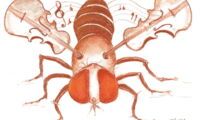
Contests for female attention turns males into better performers - in fruit flies
Giving females an opportunity to choose the male they mate with leads to the evolution of better performing males, according to new research into the behaviour of fruit flies performed by University of Sheffield, University of St Andrews and the Leibniz Institute for Zoo and Wildlife Research in Berlin, Germany.
Read more … Contests for female attention turns males into better performers - in fruit flies
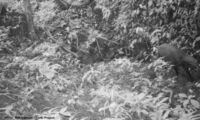
Establishing a conservation breeding programme to save the last saola
The saola (Pseudoryx nghetinhensis), a primitive wild cattle endemic to the Annamite mountain range in Vietnam and Lao People’s Democratic Republic (PDR), is in immediate danger of extinction. The primary threat to its survival is intensive commercial snaring to supply the thriving wild meat trade in Indochina. In order to save the saola it is essential to establish a conservation breeding programme. In a letter published in Science, a group of conservationists and conservation scientists, including members of the IUCN Saola Working Group and the Leibniz Institute for Zoo and Wildlife Research Berlin, have voiced their concern about the future of the species and stressed the importance of urgent ex situ management.
Read more … Establishing a conservation breeding programme to save the last saola

